Search Results for 'traders'
Day Trading Gaps
Day traders love to fade gaps, but it’s not always the right thing to do. In this video, I’ll point out some key traits of big gaps to watch out for when deciding on initiating gap-fill trades.
Day trading gaps can be quite lucrative, particularly when it happens early in the session. However, there’s a flip side to it which must be considered – and it costs many traders money to ignore the warnings.
Check out the video for more on this topic, and be sure you’re on the email list so you’re always notified of new updates like this one.
Be sure to view in HD (720P) and full-screen mode for best quality in the video.
Trade Like a Bandit!
Jeff White
Producer of The Bandit Broadcast
Follow TheStockBandit on Twitter or get our free newsletter to keep up!
Can You Trade Full-Time? Part 4
Be sure to check out Part 1, Part 2 , and Part 3 of this series if you haven’t already, as they offer some important groundwork for this series.
 This is the final portion of the 4-part series on “Can You Trade Full-Time.” It’s one of the most common questions part-time traders ask me, so I wanted to give you a list of considerations as a resource in case you’re wondering if you’re equipped with what it takes to make it.
This is the final portion of the 4-part series on “Can You Trade Full-Time.” It’s one of the most common questions part-time traders ask me, so I wanted to give you a list of considerations as a resource in case you’re wondering if you’re equipped with what it takes to make it.
Keep in mind that the things I’m sharing here are my opinions of things I think are needed in order to trade full-time, but your unique situation may differ, so modify accordingly.
Here in Part 4, we’ll look at risk, your needs, and your trading plan.
Trade Like a Bandit!
Jeff White
Producer of The Bandit Broadcast
Follow TheStockBandit on Twitter or get our free newsletter to keep up!
Contrarian View
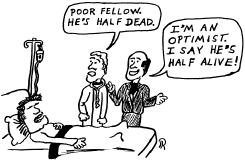 Just for fun, let’s look at both sides of this market, pretending there are actual bulls out there. (All kidding aside, there are, even if they’ve been M.I.A. of late).
Just for fun, let’s look at both sides of this market, pretending there are actual bulls out there. (All kidding aside, there are, even if they’ve been M.I.A. of late).
This market has been plenty heavy of late. The big moves I’ve caught recently have all been on the short side, and bearish consolidations abound in the charts. Simultaneously, bullish setups are few and far between, to say the very least.
But let’s look at the bullish case right now. If I’m leaving anything out, please share it in the comments, but here are a few things to consider regarding those who are counting on a lasting turnaround:
– Nowhere else to put cash right now. This is true, and a biggie. With the bond bubble keeping money managers quite leery, and precious metals already correcting sharply from their recent highs (have you seen gold?), the so-called “safe havens” haven’t been immune to the selling either. Equities are still seen as the place to be going forward.
– Multiples are contracting, value players getting more interested. The biggest difference between a technician and the fundamentalist is how momentum is viewed. Fundies look at low prices as entry opportunities, whereas technicians look at them as downtrends which may continue. These days, the value players are seeing better numbers, which may get more of them involved.
– EVERYONE seems to be sitting on considerable cash piles right now. If this market catches a bid, that cash is tremendous potential fuel for a lasting rally. As prevalent as fear has been on the way down, it will also be relevant on the way back up — who wants to miss the big rally? Nobody who runs money, I can assure you. Underperformance is worse than losing money (sadly) in the world of portfolio managers, so you can fully expect cash to come off the sidelines quickly when signs of stability finally emerge.
The bear is still alive and well, with fresh 52-week lows being made Tuesday in every index. Nonetheless, it’s always wise to look at the other side of the trade. It’s responsible, and it either lets you keep defending your stance or it presents reasons to shift (which the best traders are always willing to do).
Keep an open mind, nothing is ever out of the question in this market.
Trade Like a Bandit!
Jeff White
Producer of The Bandit Broadcast
Follow TheStockBandit on Twitter or get our free newsletter to keep up!
Lasting S&P Rally Without Banks? Not Gaah Duht
 The notion of the S&P 500 running higher without the participation of banks reminds me of Dana Carvey’s George Bush impression on SNL… “Not gaah duht.”
The notion of the S&P 500 running higher without the participation of banks reminds me of Dana Carvey’s George Bush impression on SNL… “Not gaah duht.”
The financials make up roughly 14% of the weighting of the S&P 500, but they carry possibly more from a psychological standpoint. Traders are conditioned to check the fin’s when the Spoos are on the go, and lately, the participation has been downright pathetic.
Considering that the S&P has rallied within its recent trading range, we’ve seen virtually no lift from key financial names (which I’ll review shortly). With that being the case, an upside exit from the range which actually sticks (no failure) in my opinion is rather unlikely without the participation of at least most of the names below.
Let’s take a closer look at each with some notes on the individual charts, starting with a look at the S&P:
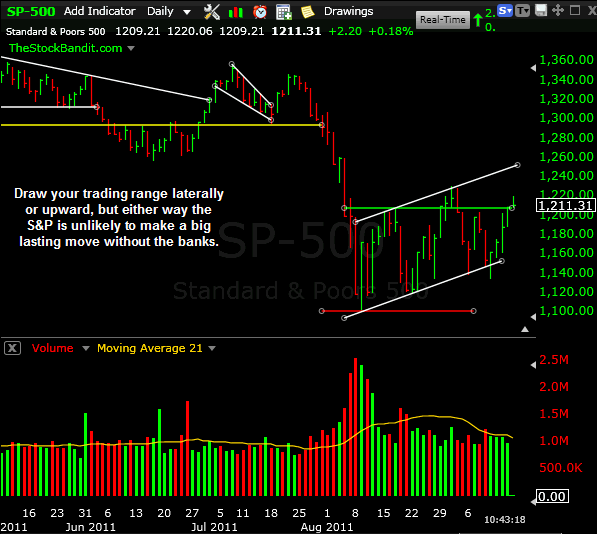
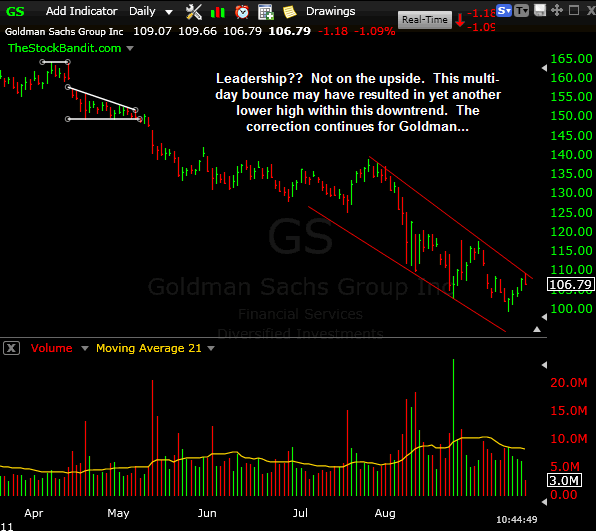
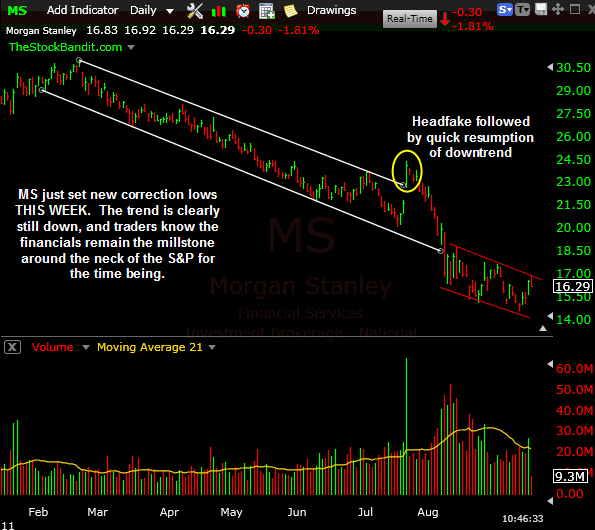
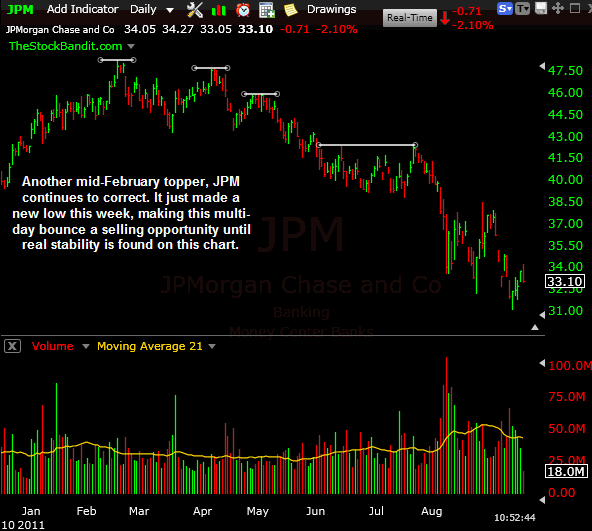
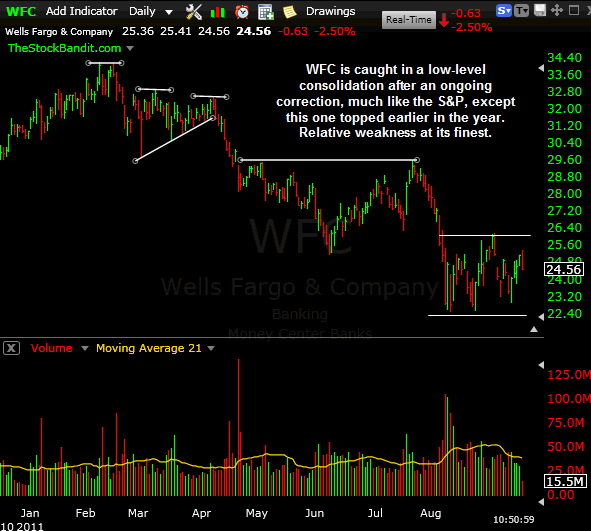
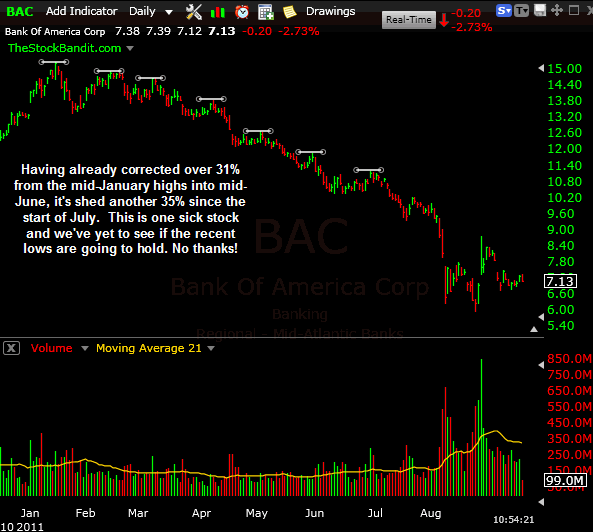
Here’s the deal…Financials need to pull their weight if this range is going to see a lasting resolution to the upside. It might happen without them, but it’s highly unlikely. Don’t take your eyes off the banks if you’re a bull.
Trade Like a Bandit!
Jeff White
Producer of The Bandit Broadcast
Follow TheStockBandit on Twitter or get our free newsletter to keep up!
Apply What You Learn or Stop Learning!
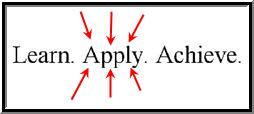 For whatever reason, a theme hit me this week that I think is highly important to share with you here.
For whatever reason, a theme hit me this week that I think is highly important to share with you here.
It all started when Tyler recently pointed out that many traders get caught in the nonstop cycle of learning, and he brought forth some excellent points. Most notably that many traders mistakenly aim for breadth of knowledge rather than depth. I think he’s dead right.
Then I ran across another article along the same exact lines, this time aimed at entrepreneurs, highlighting information bias as the tendency to seek information even when it cannot affect action.
After all, what good is information if it’s not altering or improving your actions?
As a trader, you can learn and learn and learn and not see improved results if all you’re doing is learning. Read that sentence again, I’ll wait. In fact, learning without practice will do you no practical good.
In other words, to find greater success as a trader, yes you need to learn, but you absolutely must incorporate that new knowledge into your approach. Without it, you’re wasting time learning!
Learning Isn’t Bad…
Now, don’t get me wrong. I’m passionate about traders learning more, which is why I’ve produced so much quality material through the trading courses, service membership, and the hundreds of free articles and videos for you here on the blog.
And I fully embrace the always-be-learning mentality, so long as it’s for the sake of (1) staying humble and teachable by the market, and (2) to keep growing so you’re equipped to adapt when necessary.
But It Can’t Stop There
Beyond the learning comes the application, so never leave that all-important step out of the mix.
Bella just brought up the highly valid point of how to learn from another trader by seeing their approach, internalizing their rules, “tweaking them, working on executing them, and then internalizing these improved rules” for better results. It’s one thing to learn what someone else did with a trade, but it’s much more to take elements from it to improve your next trade.
That’s what customized application looks like.
The whole idea of putting knowledge into practice is being in the habit of taking what you’re learning and then putting in the mental effort to decide how it fits with what you’re currently doing. It’s about considering ways to implement the new info rather than simply storing it away for a rainy day.
So by all means, keep learning, but only if you’re willing to apply it. Otherwise, spend your valuable time on something else.
Trade Like a Bandit!
Jeff White
Producer of The Bandit Broadcast
Follow TheStockBandit on Twitter or get our free newsletter to keep up!
3 Signs You Have a Home Run Trade
 Here’s 3 signs you have a home-run trade on your hands:
Here’s 3 signs you have a home-run trade on your hands:
* Your initial target gets reached faster than expected. Ideally, this is also accompanied by heavy volume to confirm the move. Either way, this is a stock that’s getting quickly on the move, and you’re participating – congrats.
* You get runaway gaps in your favor. A runaway gap is an indication that emotions are heating up and traders are becoming impatient. With prices moving in your favor, you’re in good shape to capture additional momentum and be able to offer out stock at higher levels.
* Your stock has a historical propensity to make big moves. This factor alone isn’t enough to produce a home-run, but with either (or both) of the previous two at work, it only adds to the likelihood that the move getting underway is going to pay you well.
Momentum trading requires a different mindset, and momentum arrives when there’s more emotion present than logic. Keep this in mind the next time you have a trade performing better than expected, and see how much you can get out of it.
Trade Like a Bandit!
Jeff White
Producer of The Bandit Broadcast
Follow TheStockBandit on Twitter or get our free newsletter to keep up!
The Key to Trade Selection
 There’s always a move you’re missing. It might be in the overall market (ETF’s), or it might be a sector or individual stock that’s making the move of the day.
There’s always a move you’re missing. It might be in the overall market (ETF’s), or it might be a sector or individual stock that’s making the move of the day.
As traders, we all dream of being involved in those names on a regular basis. And while you can focus your entire day on monitoring the news and the stocks which are jumping on headlines (some do and are highly successful), the fact of the matter is that those plays might not be best-suited for you. And that’s perfectly fine.
You’re unique, and your approach should be as well. Some traders are tuned-in enough to dedicate their attention to the headline stocks, but many are not. It’s important to accept that and go the best way for you.
Choose Wisely
In my experience, the important aspect of trade selection is founded in the ability to narrow a list of trading prospects to just a few actual candidates. The aim is to get your watchlist down to a select few which really “fit” you best.
Here are a few things to consider when doing this…
* Are there specific setups or chart patterns which have performed best for you in the past?
* What’s your preferred price range or volume minimum?
* Do you have a directional bias?
* Which type of play do you prefer… breakouts, reversals, pullbacks?
Hopefully you’re seeing some ways to start reducing that list of the cleanest 20 patterns and derive from it an actual trading list. This way, you can ignore what’s left and stick with only the ones which are most suitable for your style of trading.
Trade Like a Bandit!
Jeff White
Producer of The Bandit Broadcast





